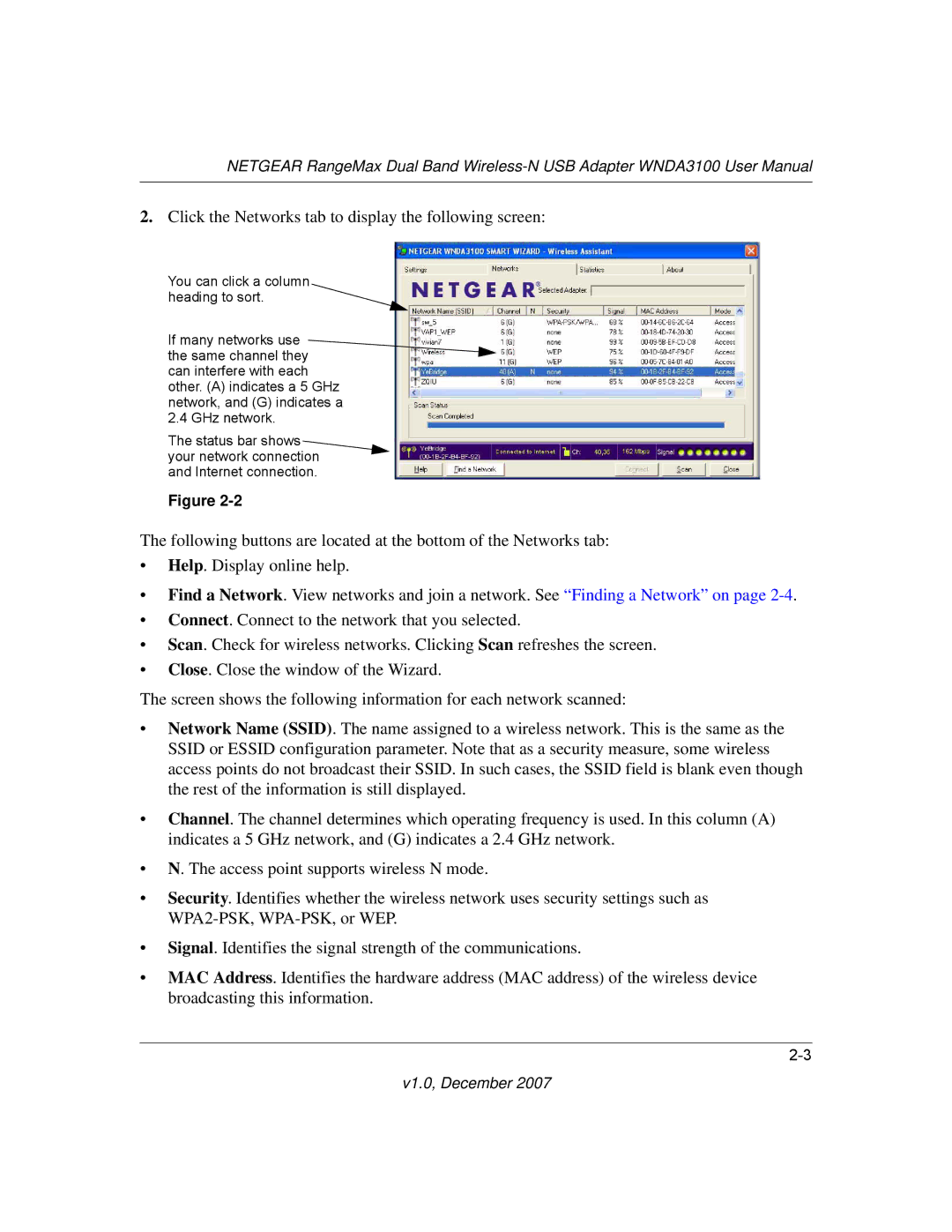
NETGEAR RangeMax Dual Band
2.Click the Networks tab to display the following screen:
You can click a column heading to sort.
If many networks use the same channel they can interfere with each other. (A) indicates a 5 GHz network, and (G) indicates a 2.4 GHz network.
The status bar shows your network connection and Internet connection.
Figure
The following buttons are located at the bottom of the Networks tab:
•Help. Display online help.
•Find a Network. View networks and join a network. See “Finding a Network” on page
•Connect. Connect to the network that you selected.
•Scan. Check for wireless networks. Clicking Scan refreshes the screen.
•Close. Close the window of the Wizard.
The screen shows the following information for each network scanned:
•Network Name (SSID). The name assigned to a wireless network. This is the same as the SSID or ESSID configuration parameter. Note that as a security measure, some wireless access points do not broadcast their SSID. In such cases, the SSID field is blank even though the rest of the information is still displayed.
•Channel. The channel determines which operating frequency is used. In this column (A) indicates a 5 GHz network, and (G) indicates a 2.4 GHz network.
•N. The access point supports wireless N mode.
•Security. Identifies whether the wireless network uses security settings such as
•Signal. Identifies the signal strength of the communications.
•MAC Address. Identifies the hardware address (MAC address) of the wireless device broadcasting this information.
